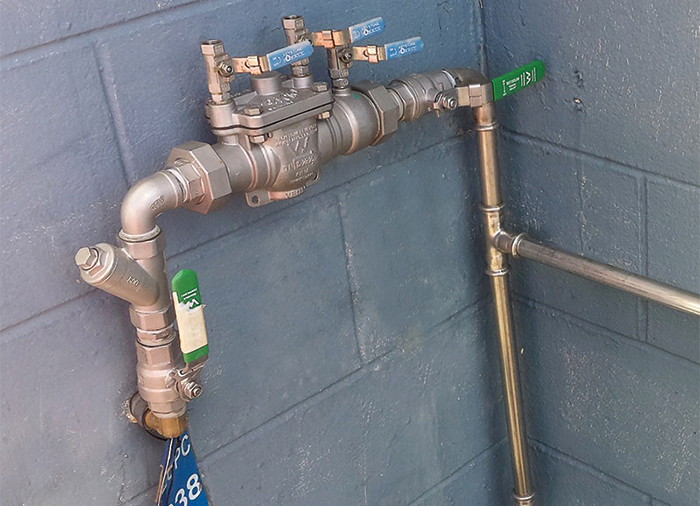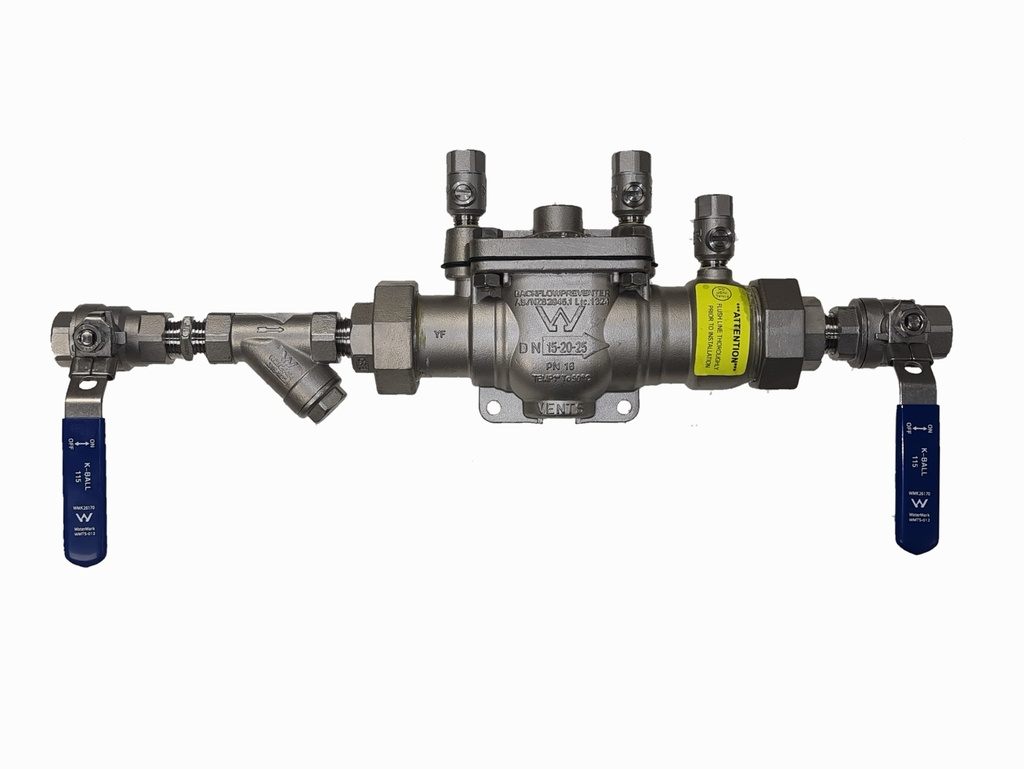
Backflow Testing & Certification
Water supply systems must prevent contamination of an area's water supply which may happen if the backflow of water and contaminants can reverse back up the pipework. Pressure differences causing backflow can either happen by back-siphonage or by backpressure. Back-siphonage means that the water supplied to the pipework is less pressure than the downstream pressure, which allows water to be pushed back in the wrong direction. Backpressure can occur when there is an insufficient release of pressure in a vessel where water is heated, resulting in the water being pressured back through the pipework in the wrong direction allowing dirty water and any other liquids in the system to flow back into a clean water supply.
Backflow protection devices stop contamination of potable water supplies by not allowing back-flowing liquids to reverse through the system and pollute the public water supply. Water is maintained at a significant pressure in water supply systems to enable water to flow from the tap, shower, or other fixture. A cost-effective way of preventing backflow is by using the principle of an air gap, creating a physical distance barrier between the water inlet and the source that may contaminate the supply. Airgaps must be greater than 25mm or twice the supply pipe size. The BRANZ Website has an excellent pictogram example of this: https://www.level.org.nz/fileadmin/downloads/Water_Use/LevelDiagram96.pdf
When it is not possible to use an air gap to prevent backflow, a backflow prevention device must be installed. High-pressure systems or when the pipework is connected to the fixture or appliance are examples of where it may not be possible to use an air gap to prevent backflow.
The Building Code Acceptable Solution G12/AS1 has three hazard levels to identify the scale of risk concerning backflow:
- High risk - which has the potential to cause death
- Medium risk – this would endanger people's health
- Low risk – this is a nuisance but does not endanger anyone's health
A rule of thumb guideline is - the higher the hazard, the higher the risk of backflow, meaning the safer the device must be.
The NZ Building Code requires that if you are a property owner, you must prevent backflow by either using a backflow prevention device or providing an adequate air gap which stops any backflow. Flow Industries have an IQP-registered experienced team that can give you expert advice on the regulations and options available, along with supplying and certifying the appropriate backflow preventer devices that your property may require. We can test and certify existing and new devices and provide the certificate to ensure your property complies with the NZ Building Code.

To install this Web App in your iPhone/iPad press ![]() and then Add to Home Screen.
and then Add to Home Screen.



